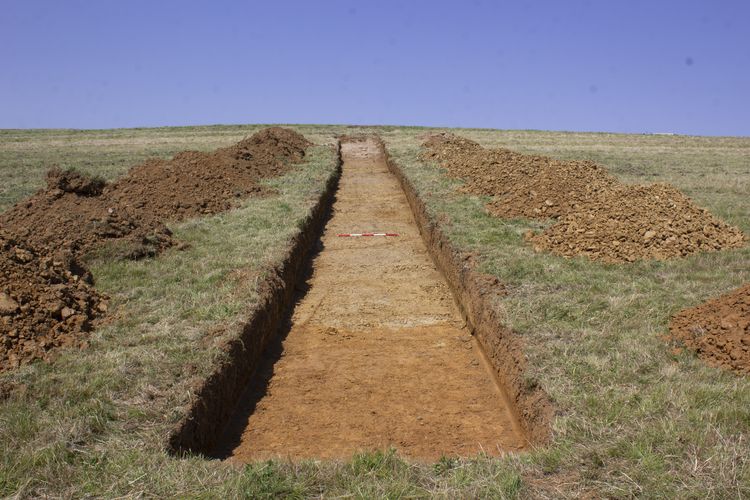For more than fifteen years the ADS has been working to serve its users, both by acting as a long-term repository for valuable archaeological data and by providing open and free access to this data for research purposes. Our users, both those who deposit data and those who access it, come from all possible sectors of the archaeology discipline. We regularly deal with data and data requests from academic archaeologists, local and national government archaeologists, the commercial sector, the community archaeology sector and, being an open archive, the general public. The ADS’s significance in the archaeological landscape has grown considerably in the last decade or so and with the use of access statistics and user feedback it has generally been easy for the ADS to demonstrate that we offer a valuable service to our users. However, it is a much more challenging proposition to find ways of analysing ADS usage that make a clear statement about the very important issue of how much economic impact that the ADS has on the sector. An ADS Impact Study funded by JISC is intending to investigate in detail exactly this question and to give a clear indication of what the value of having a free to use and open access resource like the ADS is to the whole archaeological sector.
Engaging the expertise of Neil Beagrie of Charles Beagrie Ltd. and Professor John Houghton of the Centre for Strategic Economic Studies (CSES) at Victoria University in Australia, the project will analyse and survey indicators and perceptions of the value of digital collections held by the ADS and how those indicators and perceptions of value can be measured. The CSES and Charles Beagrie have led the field in conducting value perception and economic impact surveys for digital repositories and Professor Houghton and Neil Beagrie bring to the project extensive experience of this type of analysis, they have recently completed a similar and highly successful exercise with the Economic and Social Data Service (ESDS).
A major element of the projects work will be two forms of stakeholder survey. The first phase will see a selection of users and depositors from all sectors be invited to participate in in-depth interviews, and secondly an online survey will be launched to gauge the levels of use, impacts, satisfaction, and perceptions of value amongst the broadest possible range of ADS users. It is important to the successful outcome of the project that we reach as many people as possible in this online survey phase of the project. We are hopeful we can draw on the cooperation and goodwill of our user community in the coming months to get as large a response as possible. The survey will go online in June and will be actively promoted through all possible channels from that time, so please look out for it.
It is also important to note that this project will not only have immediate benefits for the ADS, its stakeholders and user communities, but is also intended to investigate methodologies and good practice in the area of valuation that will be directly applicable to other repositories, in different domains, allowing them to reap the benefits of this work as they seek to analyse their own economic impact.






I would like to participate in this survey as the ADS is a valuable if not essential tool for amateur researchers like myself working with a limited budget and time.
Thanks for your message Dave, you are exactly the kind of user we would like to have included in the survey, so your participation is very much appreciated. Please follow this link: https://www.surveymonkey.com/s/ADS-Users
I have had this comment from one of our members.
Quote
The trouble is that ADS is NOT accessible to all — it is hidden behind a firewall so that Google and the other web crawlers cannot find it, which to all intents and purposes makes it useless.
Try googling Selkirk for instance. If you get behind the firewall you will discover that the Royal commission on historical monuments did a very good survey of Selkirk and its Castle in 1908 but because of the firewall, all the references to all the Royal commission volumes which they have put on their website are simply not available. And I think this is scandalous.
Unquote
Keith Foster
Treasurer of The Council for Independent Archaeology
I’m afraid this is a misunderstanding on the part of your member, ADS archive content is fully crawlable by Google (and other search engines) and there is no ‘firewall’. However external search providers are not designed to search a database like ArchSearch, which is why it is better to come to the ADS web site rather than relying on external search engines. All ADS records are free and open to use, the search mechanisms available are much more sophisticated than a simple ‘type and hope’ search and are based on depositor supplied metadata. If you go the the ADS website, rather than just Google, and search for Selkirk Castle 17 results are returned, 14 of these can be followed, by one click, to Canmore where refs. are located.
Is it okay to place a portion of this in my web site if perhaps I submit a reference to this web site?
Yes, feel free to use any portion of this blog if you use the reference:
Archaeology Data Service Blog post: http://archaeologydataservice.ac.uk/blog/2012/05/new-study-on-the-impact-of-the-ads/
hi, as an active industrial archaeologist I would just echo Dave Hayward’s comments regarding the value for us amateurs
Thanks Neil, the support and use of the ADS by all archaeological communities is very much appreciated.